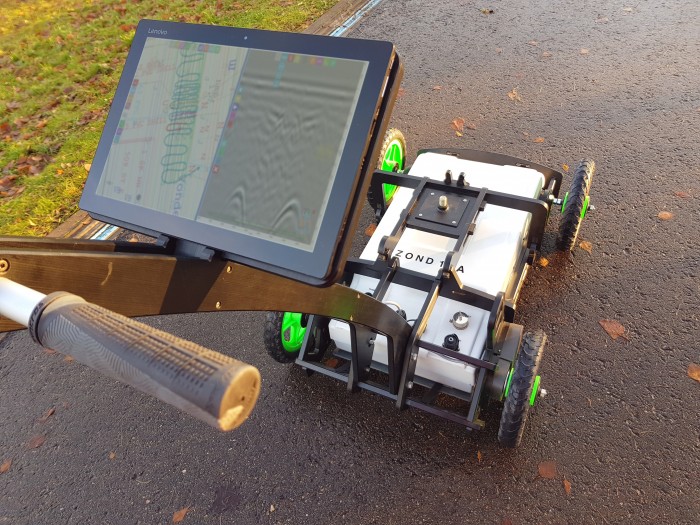Exploring the Unseen: The Way GPR Investigations Are Revolutionizing the Field of Archaeology
In recent years, Ground Penetrating Radar inspections have emerged as a revolutionary tool in multiple disciplines, notably in the field of archaeology. This novel approach allows investigators to probe beneath the soil without the need for excavation, revealing subsurface features, historical items, and even the remains of humans. As a result, GPR is changing how archaeologists approach their work, providing a streamlined, budget-friendly, and non-destructive way to uncover the history.
The importance of GPR studies extends beyond archaeology. find out here are wide-ranging, impacting construction, engineering, environmental studies, and the assessment of infrastructure. The capacity to visualize features below the surface in actual time enhances choices and minimizes risks associated with underground construction and alterations. This article delves into the various aspects of GPR techniques, presenting its positive aspects, uses, and consequences for future projects, while also tackling frequent misunderstandings and presenting insight for those considering this advanced survey approach.
Grasping GPR Surveys as well as Its Significance
GPR surveys make use of radar signals for the purpose of visualizing the subsurface, rendering them a crucial tool across various industries. The technology is particularly important in archaeology, where aids in identifying artifacts and structures buried beneath layers of soil without the need for invasive digging. Offering https://bro-hyldgaard-2.blogbright.net/ground-penetrating-radar-an-innovative-solution-in-subsurface-exploration -destructive means of investigating archaeological sites, GPR boosts the chances of discovering and preserving historical treasures while minimizing harm to relevant sites.
The significance of GPR surveys extends beyond the archaeological field; they play a vital role in building and infrastructure projects as well. With the capacity to detect underground utilities, soil structures, and possible hazards, GPR helps ensure that projects are executed safely and efficiently. This reduces the risk of accidents and financially burdensome delays, making GPR investigations an essential part of the design and implementation phases in different construction endeavors.
GPR technology is regularly evolving, which further emphasizes its significance in modern applications. As industries increasingly seek creative solutions for subsurface investigation, the flexibility and precision of GPR investigations place them at the forefront of technological advancements. Understanding how GPR surveys work and their advantages sets the stage for their application in varied fields, eventually leading to a more knowledgeable approach to project design and execution.
Uses and Prospects of Ground Penetrating Radar in Multiple Fields
Ground Penetrating Radar has emerged as a essential instrument across multiple industries, enhancing the potential to map and map underground features bypassing invasive techniques. In the construction as well as infrastructure industries, GPR is critical for identifying utilities and evaluating the ground conditions before digging begins. This not just helps in avoiding unexpected damage to current facilities and also aids in designing more efficient plus safer construction projects. By seeing what lies below the topsoil, engineers and builders can enhance their blueprints and lower the chances of issues.
In historical research, the use of GPR have transformed the way archaeological sites are investigated and examined. Researchers can uncover valuable findings and architectural features besides not disturbing the site, permitting them to collect data that was previously concealed. This gentle method not only protects the protection of historical sites while also facilitates more in-depth studies by allowing researchers to identify shapes and structures within the ground that might suggest human presence in the past. The technology helps decode historical environments and supports a more profound knowledge of historical societies.

Geotechnical and geotechnical investigations also benefit considerably from the use of GPR. It assists in identifying pollution sources, evaluating solid waste sites, and examining the safety of rock structures. By delivering detailed images of underground conditions, GPR aids in influencing knowledgeable decisions related to site assessments and pollution mitigation. This not just boosts productivity but also guarantees adherence with environmental regulations, guaranteeing that potential hazards are mitigated in advance. Overall, this technology serves as a key tool across these fields, leading to better results, economic advantages, and increased security.
Emerging Developments and Insights for Ground Penetrating Radar Survey Tech
As GPR technology continues to progress, one of the most important developments is the integration of advanced data processing and analysis methods. Machine learning and AI are being more utilized to enhance the analysis of GPR information. These advancements enable more accurate mapping out of underground structures and provide greater insights into the complex subsurface conditions. By automating the analysis process, initiatives can function more efficiently, minimizing the duration required for analysis.
Another notable trend is the downsizing and portability of GPR devices. Small and portable GPR devices are being engineered, allowing for simpler deployment in challenging environments and lessening the need for elaborate site preparation. This enhanced mobility enables assessments in formerly inaccessible areas, broadening the scope of potential uses, from urban settings to remote locations. As technology advances, these portable devices will likely become more accessible, making GPR available to a larger range of operators, including independent firms and consultants.
Finally, as the need for eco-friendly practices rises, GPR assessments will increasingly conform with ecological considerations. see here now allows for minimal impact investigations, minimizing disruption to the site and surrounding environment. In civil engineering and building, GPR can facilitate the planning and execution of initiatives in an eco-conscious manner. This trend will not only support adherence to regulations but also promote public trust and belief in infrastructure development efforts.